
Getting Started with NativeScript
¥54.49
Explore the possibility of building truly native, cross-platform mobile applications using your JavaScript skill—NativeScript!About This BookSave your marketing time by building for iOS, Android, and Windows Mobile platforms simultaneouslyBe an ace at utilizing the features of NativeScript and its ability to communicate with each of the host device libraries nativelyProficiently, build your fully cross-platform communication application exhibiting the fundamentals of NativeScriptWho This Book Is ForIf you are a JavaScript developer and want to build cross-platform applications, then this book is just the right one for you!What You Will LearnInstall and compile your application in NativeScriptGet important know-how on the NativeScript project structureDevelop and style your screens for multiple platformsCreate a full-featured cross-platform communication applicationImport and use several third-party componentsSimplify and deal with device resolution and cross-platform issuesTest and deploy your applicationIn DetailNativeScript allows you to build a fast cross-platform application that has a native UI. NativeScript is a true cross-platform framework that generates native speed applications using the native components of the host platform, all using JavaScript. Although NativeScript allows you to build your application in JavaScript, you have full access to the host OS from your code, allowing you to easily tweak or use new platform features instantly at native code speeds.Whether you have already developed multiple applications or zero applications, this book will help you to develop your next application in a cross-platform framework quickly, saving you a massive amount of time and money.This book concisely shows you NativeScript’s built-in framework that allows you to rapidly develop a fully-working compiled cross-platform application in just a few chapters. It starts by laying the foundation of NativeScript and working through the fundamentals to create a basic shell of the application. Moving on, you’ll see how to build a full-fledged application step by step. We’ll show you how to use plugins, and how to communicate with the native OS libraries easily so that you can customize your application as if your app was created in Java or Objective C. We then deal with the issues that arise from being cross platform and compensate for the different screen sizes, screen resolutions, and device abilities. Finally, we progress to testing and deploying your app.Style and approach A stepwise guide for building cross-platform mobile applications with the help of easy-to-understand examples.

Apple Pay Essentials
¥54.49
Harness the power of Apple Pay in your iOS apps and integrate it with global payment gatewaysAbout This BookBe it adding an Apple Pay button to your app or calculating sales tax with Apple Pay- this book gives you all the information you need to build a fully-functional Apply Pay applicationPaying within iOS Apps made easier and secure with this no nonsense and powerful guideEscape tedious payment options by creating compelling product card screens that present the Pay button, which your customers can tap to quickly order your productsWho This Book Is ForThis book is for anyone who wants to integrate Apple Pay in their applications. Basic familiarity with programming and the Xcode developer tools is expected.What You Will LearnDesign a product card that includes the Apple Pay buttonImplement the Apple Pay workflow in an efficient wayUse NSDecimalNumber objects to perform financial calculations accuratelyManage custom order information in the Apple Pay workflow and your custom order management systemExtract payment information from a payment tokenImplement a secure, server-side payment-processor programFind out everything you wanted to know about Apple Pay in iOS 9In DetailApple Pay, one of the most talked about offerings of the latest iOS 9 release, is a digital wallet and electronic payment system developed by Apple Inc. Paying in stores or within apps has never been easier or safer. Gone are the days of searching for your wallet, and the wasted moments finding the right card! Now you can use your credit cards and rewards cards with just a touch.It allows payment to merchants, using Near field Communication (NFC), and within iOS apps. Implementing Apple Pay within apps for payment is a bit tricky, but our book solves this problem for you.Whether you are a brand new iOS app developer or a seasoned expert, this book arms you with necessary skills to successfully implement Apple Pay in your online-payment workflow.Whether you are a brand new iOS app developer or a seasoned expert, this book arms you with the necessary skills to successfully implement Apple Pay. We start off by teaching you how to obtain the certificates necessary to encrypt customers’ payment information. We will use Xcode and Objective C for the interface and Node.js for server side code. You will then learn how to determine whether the customer can use Apple Pay, and how to create payment requests. You will come to grips with designing a payment-processor program to interact with the payment gateway. Finally, we take a look at a business-focused view of Apple Pay protocols and classes.By the end of this book, you will be able to build a fully functional Apple Pay-integrated iOS appStyle and approachThis is an easy-to-follow guide on integrating Apple Pay in your iOS Application. With step by step instructions along with excellent screen shots you will be able to learn everything that you wanted to know about Passbook and Apple Pay in iOS 8.
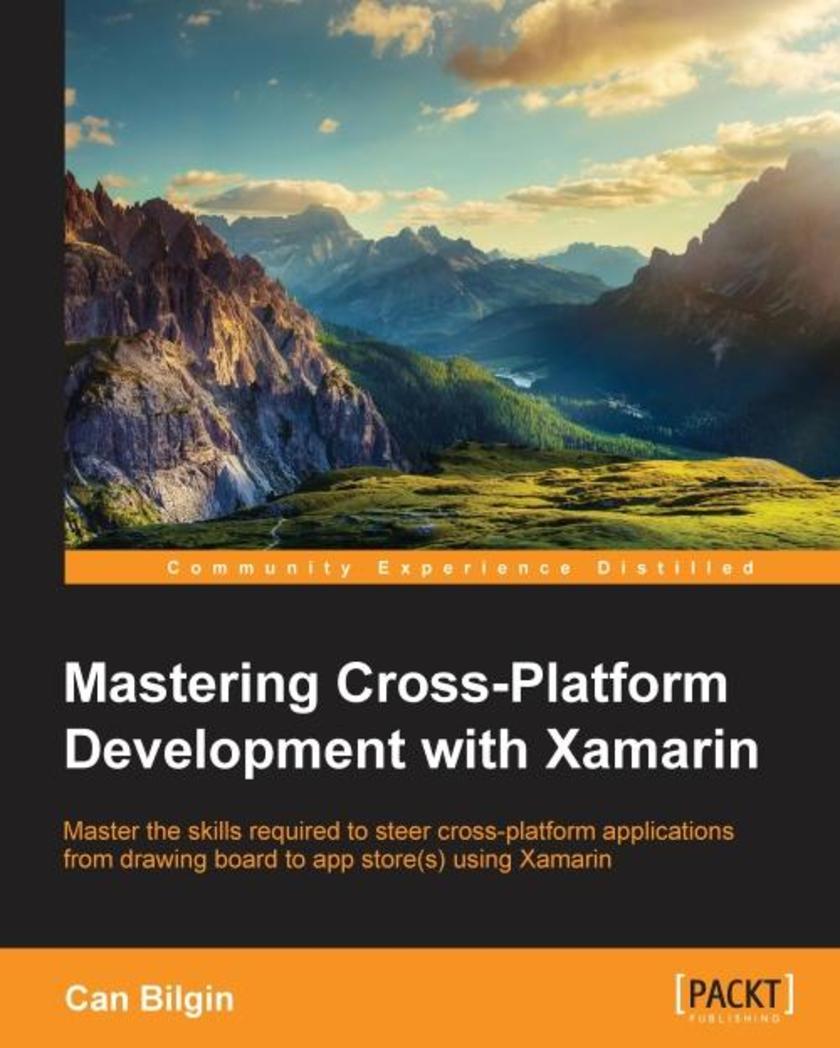
Mastering Cross-Platform Development with Xamarin
¥80.65
Master the skills required to steer cross-platform applications from drawing board to app store(s) using Xamarin About This Book Develop your Xamarin development skills with this comprehensive guide on various patterns and features so you can create elegant and high-quality applications Create adaptive user interfaces on separate platforms without compromising the user experience and platform identity Implement application lifecycle management concepts to manage and finalize cross-platform projects and efficiently collaborate with others Who This Book Is For This book is ideal for those who want to take their entry–level Xamarin mobile development skills to the next level to become the go-to person within their organization. To fully understand the patterns and concepts described, you should possess a reasonable level of knowledge about the core elements of Xamarin and cross-platform application development with it. What You Will Learn Configure your environment for cross-platform projects with Xamarin Gain memory management skills to avoid memory leaks and premature code cycles while decreasing the memory print of your applications Employ asynchronous and parallel patterns to execute non-interactive and non-blocking processes Create and use SQLite databases for offline scenarios Integrate network resources with cross-platform applications Design and implement eye-catching and reusable UI components without compromising nativity in mobile applications Manage the application lifecycle of cross-platform development projects Distribute Xamarin applications through public or private channels In Detail The main goal of this book is to equip you with the required know-how to successfully analyze, develop, and manage Xamarin cross-platform projects using the most efficient, robust, and scalable implementation patterns. This book starts with general topics such as memory management, asynchronous programming, local storage, and networking, and later moves onto platform-specific features. During this transition, you will learn about key tools to leverage the patterns described, as well as advanced implementation strategies and features. The book also presents User Interface design and implementation concepts on Android and iOS platforms from a Xamarin and cross-platform perspective, with the goal to create a consistent but native UI experience. Finally, we show you the toolset for application lifecycle management to help you prepare the development pipeline to manage and see cross-platform projects through to public or private release. Style and approach This is a comprehensive guide on various Xamarin features and patterns. Each topic is explained and demonstrated with code samples, which are revised in each section in an iterative manner and analyzed with available diagnostic tools to demonstrate the benefits of different patterns.
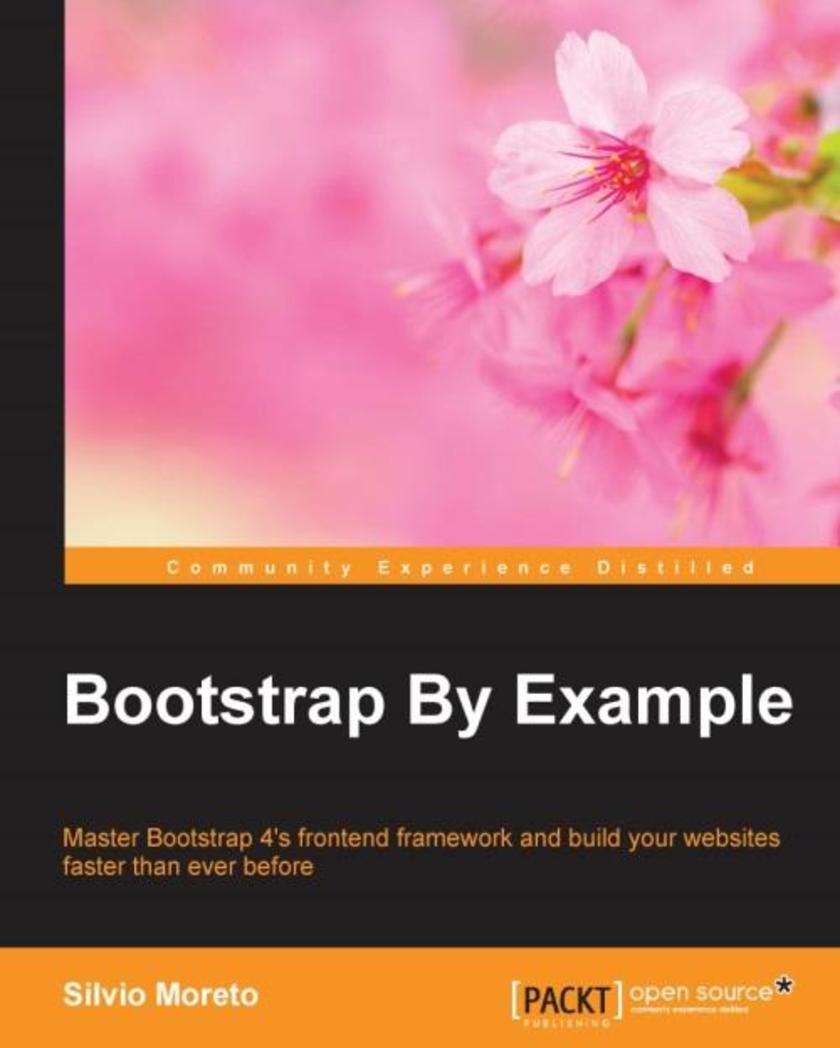
Bootstrap By Example
¥80.65
Master Bootstrap 4's frontend framework and build your websites faster than ever before About This Book Become an expert in Bootstrap framework, and speed up front-end development and prototyping through real-life examples An applied guide exploring two web applications such as Twitter and Dashboard from scratch Hands on the Bootstrap version 4 even before the official release Who This Book Is For If you are a frontend developer with no knowledge of Bootstrap, then this book is for you. Basic knowledge of HTML, CSS, and JavaScript is expected, as well as a reasonable understanding of web frameworks, such as jQuery. What You Will Learn Discover how to use Bootstrap’s components and elements, and to customize them for your own projects Understand the framework’s usage in the best way with the recommended development patterns Create web pages for any kind of device like tablet, mobile, computer, etc. Construct a Twitter app by exploring the advanced bootstrap components like Breadcrumbs, Pagination, Media objects, and so on Combine the power of JavaScript with your Bootstrap app for more functionality Create a Dashboard web app using Bootstrap’s JavaScript plugins Learn the difference between Bootstrap’s version 3 and 4 of the framework Extend your knowledge on Bootstrap’s external plugins, their incorporation and usage In Detail Bootstrap is a free, open source collection of tools that helps developers create websites or web applications. It provides a faster, easier, and less repetitive solution to designing and building applications. Before Bootstrap’s release, it was necessary to import a variety of libraries into your project that offered different components and features for web interface development. Plus with the increased popularity of smartphones there were lack of libraries that could handle the responsiveness of a web page. Bootstrap‘s existence let it quickly become famous as a front-end framework that offered a wide set of tools from page grid up to components that render a web page in the best possible way for any device. This book will be a tutorial covering various examples as well as step-by-step methodology to create interesting web applications using Bootstrap and to understand the front-end framework to its core. We begin with an introduction to the Bootstrap framework and setting up an environment to build a simple web page. We then cover the grid system, basic Bootstrap components, HTML elements, and customization components for responsive and mobile first development. This is presented by creating a beautiful Landing page sample. You will also learn how to create a web application like Twitter by using the full set of components offered in the framework. Finally, you will learn to create a dashboard web app, using Bootstrap to its finest potential including component customizations, event handling, and external library integration. All these examples are explained step-by-step and in depth, while covering the versions 3 and the most recent version 4 of Bootstrap. So, you will be in the state of the art for front-end development. By the end of this book, you will be familiar with the development of a plugin for the framework and Bootstrap’s world which is popular for fast paced front-end web development, used in countless projects all over the world, and now yours. Style and approach This is a step-by-step guide that closely focuses on developing web applications in most objective way solving real-life problems with Bootstrap. It covers two sample web applications, which are explained in detail.
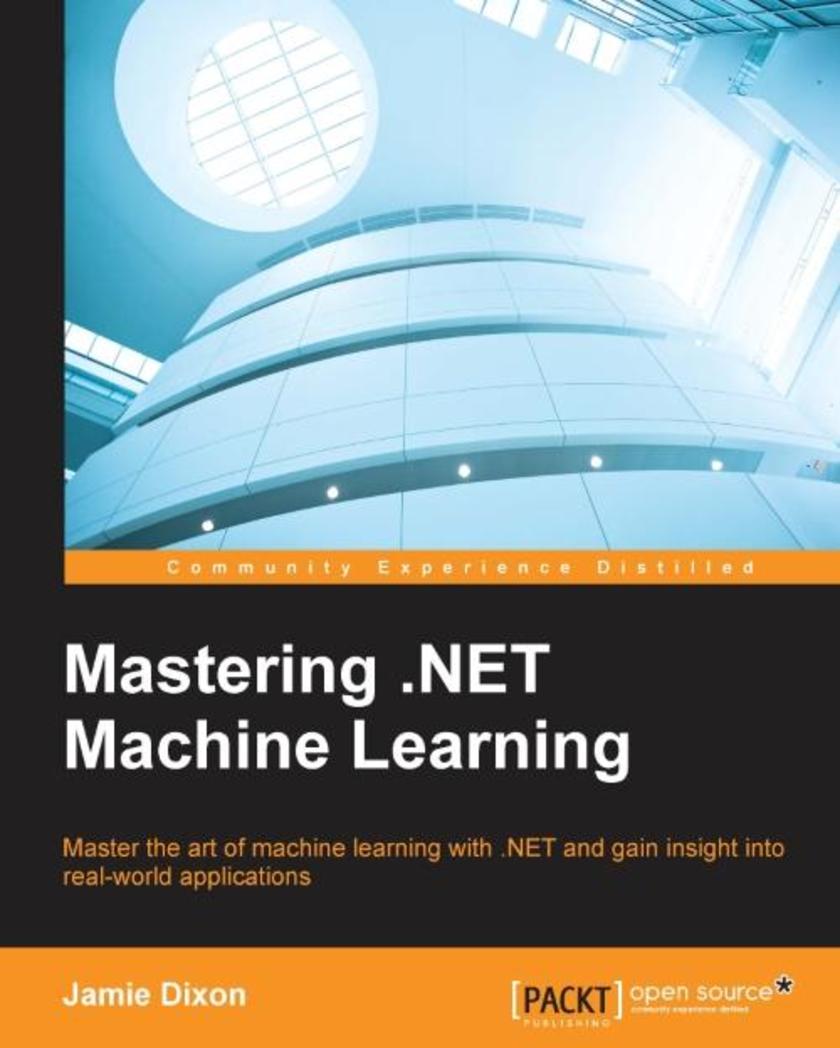
Mastering .NET Machine Learning
¥99.18
Master the art of machine learning with .NET and gain insight into real-world applications About This Book Based on .NET framework 4.6.1, includes examples on ASP.NET Core 1.0 Set up your business application to start using machine learning techniques Familiarize the user with some of the more common .NET libraries for machine learning Implement several common machine learning techniques Evaluate, optimize and adjust machine learning models Who This Book Is For This book is targeted at .Net developers who want to build complex machine learning systems. Some basic understanding of data science is required. What You Will Learn Write your own machine learning applications and experiments using the latest .NET framework, including .NET Core 1.0 Set up your business application to start using machine learning. Accurately predict the future using regressions. Discover hidden patterns using decision trees. Acquire, prepare, and combine datasets to drive insights. Optimize business throughput using Bayes Classifier. Discover (more) hidden patterns using KNN and Na?ve Bayes. Discover (even more) hidden patterns using K-Means and PCA. Use Neural Networks to improve business decision making while using the latest ASP.NET technologies. Explore “Big Data”, distributed computing, and how to deploy machine learning models to IoT devices – making machines self-learning and adapting Along the way, learn about Open Data, Bing maps, and MBrace In Detail .Net is one of the widely used platforms for developing applications. With the meteoric rise of Machine learning, developers are now keen on finding out how can they make their .Net applications smarter. Also, .NET developers are interested into moving into the world of devices and how to apply machine learning techniques to, well, machines. This book is packed with real-world examples to easily use machine learning techniques in your business applications. You will begin with introduction to F# and prepare yourselves for machine learning using .NET framework. You will be writing a simple linear regression model using an example which predicts sales of a product. Forming a base with the regression model, you will start using machine learning libraries available in .NET framework such as Math.NET, Numl.NET and Accord.NET with the help of a sample application. You will then move on to writing multiple linear regressions and logistic regressions. You will learn what is open data and the awesomeness of type providers. Next, you are going to address some of the issues that we have been glossing over so far and take a deep dive into obtaining, cleaning, and organizing our data. You will compare the utility of building a KNN and Naive Bayes model to achieve best possible results. Implementation of Kmeans and PCA using Accord.NET and Numl.NET libraries is covered with the help of an example application. We will then look at many of issues confronting creating real-world machine learning models like overfitting and how to combat them using confusion matrixes, scaling, normalization, and feature selection. You will now enter into the world of Neural Networks and move your line of business application to a hybrid scientific application. After you have covered all the above machine learning models, you will see how to deal with very large datasets using MBrace and how to deploy machine learning models to Internet of Thing (IoT) devices so that the machine can learn and adapt on the fly. Style and approach This book will guide you in learning everything about how to tackle the flood of data being encountered these days in your .NET applications with the help of popular machine learning libraries offered by the .NET framework.

Learning VMware App Volumes
¥107.90
Deliver applications to virtual desktop environments in seconds and at scale with the click of a button About This Book Learn how can you deliver a great user experience and drive down storage and management costs Discover hidden gems to deliver applications to virtual desktop environments in seconds This book will help you fully utilize the true potential of VMware App Volumes and design and build a complete production environment Who This Book Is For This book is for administrators and IT teams who would like to take full advantage of App Volumes to deal with application workloads. It will also be useful for virtualization professionals and teams who are working on VDI deployments and VMware end user computing solutions. What You Will Learn Find out how the VMware App Volumes solution can enhance the management and delivery of applications in your desktop environment Design a real-life App Volumes solution using best practices and following the recommended sizing guides Install, configure, and deploy App Volumes so it is ready to start delivering applications Create and prepare applications ready to be delivered to end users Discover how App Volumes can enhance other desktop solutions by looking at how it integrates with VMware Horizon View, VMware ThinApp, RDSH, and Citrix XenDesktop/XenApp Understand how to configure the advanced options within App Volumes In Detail App Volumes provides a virtualized, real-time application delivery engine for virtual desktop infrastructure and is designed to enable VDI deployments to ensure greater flexibility, agility, and cost reduction. This book starts with an in-depth overview of the architecture and components used to design an optimized solution. We then show you how to install and configure App Volumes for different use cases such as VMware View integration, using VMware ThinApp, Citrix XenApp, and more. Throughout the chapters, we provide hints, tips, and tricks as well as best practices. By the end of the book, you will have built a working App Volumes environment and acquired the skills to build and run a production environment. Style and approach This book comprises of the theoretical explanations that will help you perform a complete App Volumes deployment through step-by-step instructions

Troubleshooting System Center Configuration Manager
¥80.65
Troubleshoot all the aspects of your Configuration Manager installation, from basic easy checks to the advanced log files and serious issues About This Book Learn to troubleshoot Configuration Manager 2012 based versions of Microsoft System Center Understand the usability of tools and find resolutions to all the issues of Configuration Manager A step-by-step practical guide with the necessary screenshots and examples Who This Book Is For If you are new to Configuration Manager or have experience with it, and are interested in identifying, diagnosing and resolving the System Center Configuration Manager administration issues then this book is for you. What You Will Learn Fix your clients and install them correctly Understand how your Configuration Manager hierarchy works Extend your error information Troubleshoot Configuration Manager roles Know your options when faced with problems Prevent future problems occurring In Detail Microsoft System Center Configuration Manager is the most popular enterprise client management solution in the world with some of the best features available. Troubleshooting this product, however, is not always as simple as you might want, not least getting to know the hundreds of log files and understanding how the various components work. The book starts with discussing the most commonly used tools for troubleshooting the variety of problems that can be seen in Configuration Manager. It then moves to providing a high level view of the available log files, their locations, what they relate to and what they typically contain. Next, we will look at how we can fully utilize and extend all the available information from the console monitoring pane through to the status messages and down into error logging with some further reaches into WMI, SQL, registry and the file structure. You will then learn what the common error codes mean, how to make sense of the less common ones and what they actually mean with respect to Configuration Manager. Further to this, you will pick up widely acknowledged best practices both from a proactive stance when carrying out your daily administrative tasks and also from a reactive position when the green lights start to turn red right down to a complete failure situation. By the end of the book, you will be competent enough to identify and diagnose the root causes of System Center Configuration Manager administration issues and resolving them. Style and approach An easy to follow yet practical guide that will advise you on what tools and information you have available to troubleshoot with, if you can extend that information and what to look for solving the issues.
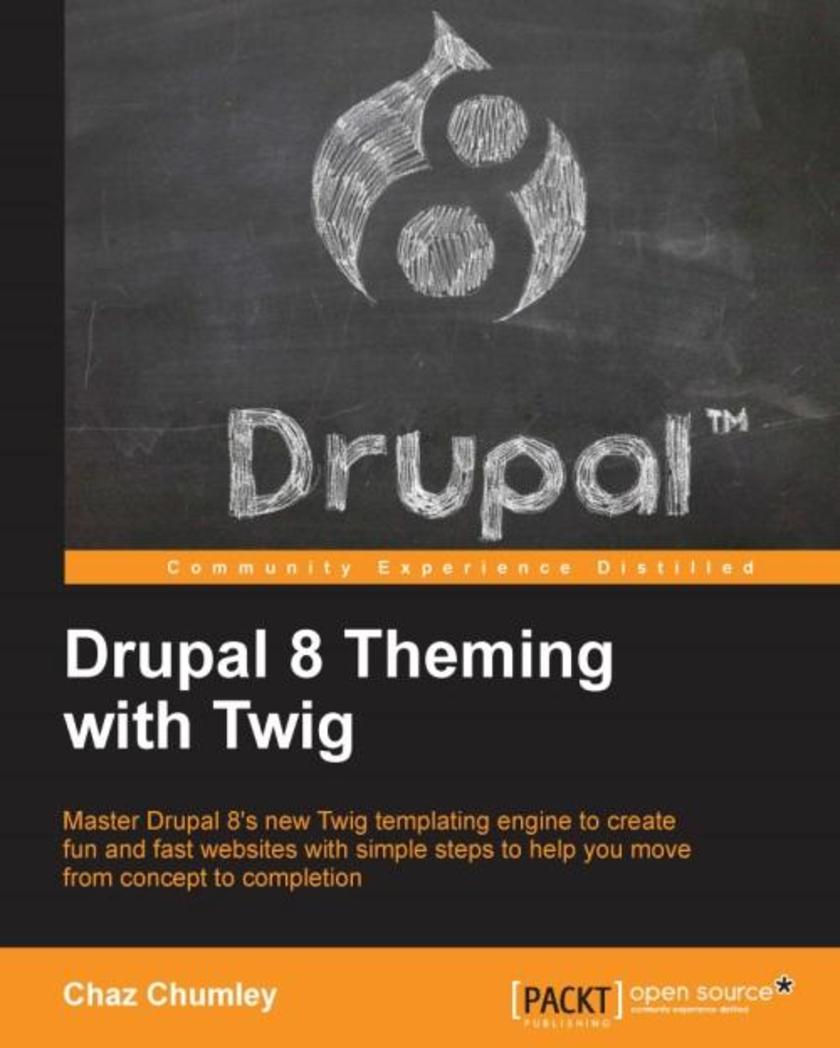
Drupal 8 Theming with Twig
¥80.65
Master Drupal 8’s new Twig templating engine to create fun and fast websites with simple steps to help you move from concept to completion About This Book Create beautiful responsive Drupal 8 websites using Twig Quickly master theme administration, custom block layouts, views, and the Twig template structure A step-by-step guide to the most common approaches in web design Who This Book Is For This book is intended for front-end developers, designers, and anyone who is generally interested in learning all the new features of Drupal 8 theming. Discover what has changed from Drupal 7 to Drupal 8 and immerse yourself in the new Twig PHP templating engine. Familiarity with HTML5, CSS3, JavaScript, and the Drupal Admin interface would be helpful. Prior experience with setting up and configuring a standalone development environment is required as we will be working with PHP and MySQL. What You Will Learn Navigate the Drupal 8 Admin interface Build custom block layouts with reusable and fieldable blocks Create subthemes based on the Bartik and Classy base themes Construct a responsive theme with Twitter Bootstrap Work with the new Twig PHP templating engine Configure Drupal for Twig debugging Enable preprocessing of Twig variables Develop a theme from scratch following a step-by-step project outline In Detail Drupal 8 is an open source content management system and powerful framework that helps deliver great websites to individuals and organizations, including non-profits, commercial, and government around the globe. This new release has been built on top of object-oriented PHP and includes more than a handful of improvements such as a better user experience, cleaner HTML5 markup, a new templating engine called Twig, multilingual capabilities, new configuration management, and effortless content authoring. Drupal 8 will quickly become the new standard for deploying content to both the web and mobile applications. However, with so many new changes, it can quickly become overwhelming knowing where to start and how to quickly. Starting from the bottom up, we will install, set up, and configure Drupal 8. We’ll navigate the Admin interface so you can learn how to work with core themes and create new custom block layouts. Walk through a real-world project to create a Twig theme from concept to completion while adopting best practices to implement CSS frameworks and JavaScript libraries. We will see just how quick and easy it is to create beautiful, responsive Drupal 8 websites while avoiding the common mistakes that many front-end developers make. Style and approach Drupal 8 Theming with Twig is intended for front-end developers, designers, and anyone who is generally interested in learning all the new features of Drupal 8 theming. Discover what has changed from Drupal 7 to Drupal 8 and immerse yourself in the new Twig PHP templating engine. Familiarity with HTML5, CSS3, JavaScript, and the Drupal Admin interface would be helpful. Prior experience with setting up and configuring a standalone development environment is required as we will be working with PHP and MySQL.

OpenStack Trove Essentials
¥63.21
Build your own cloud based Database as a Service using OpenStack Trove About This Book Familiarize yourself with the concept of Database as a Service and make your existing system scalable and efficient with OpenStack Trove Minimize the administrative tasks and complexities of managing your cloud infrastructure This is a fast-paced guide to datastore management on the OpenStack platform using OpenStack Trove Who This Book Is For If you are a DBA / system administrator / architect, or a student who wants to build a Database as a Service based on OpenStack, this book is for you. You should have a basic knowledge of OpenStack components, RDBMS/NoSQL, IaaS, and cloud computing. What You Will Learn Get to grips with the basics of OpenStack and the prerequisites to install Trove Understand the expectations of DBaaS and how Trove can help you achieve them Set up a basic installation of DevStack (Development Stack) in a virtual box Install Trove and utilize its configuration groups to manage and tune databases Use Image builder to create guest images for Trove Utilize Trove to provision your first database instance Back up and restore your databases with the help of Trove In Detail OpenStack has become an extremely popular solution to build public and private clouds with. Database as a Service (DBaaS) enables the delivery of more agile database services at lower costs. Some other benefits of DBaaS are secure database deployments and compliance to standards and best practices. Trove is a DBaaS built on OpenStack and is becoming more popular by the day. Since Trove is one of the most recent projects of OpenStack, DBAs and system administrators can find it difficult to set up and run a DBaaS using OpenStack Trove. This book helps DBAs make that step. We start by introducing you to the concepts of DBaaS and how is it implemented using OpenStack Trove. Following this, we look at implementing OpenStack and deploying Trove. Moving on, you will learn to create guest images to be used with Trove. We then look at how to provision databases in self-service mode, and how to perform administration tasks such as backup and recovery, and fine-tuning databases. At the end of the book, we will examine some advanced features of Trove such as replication. Style and approach This fast-paced, step-by-step guide introduces you to DBaaS, OpenStack Trove, and its components, leading you through building your own Cloud-based DBaaS. Using the DevStack deployment method, you will spend less time on installing OpenStack so you can devote more time to learning how to provision and manage databases in a DBaaS environment.
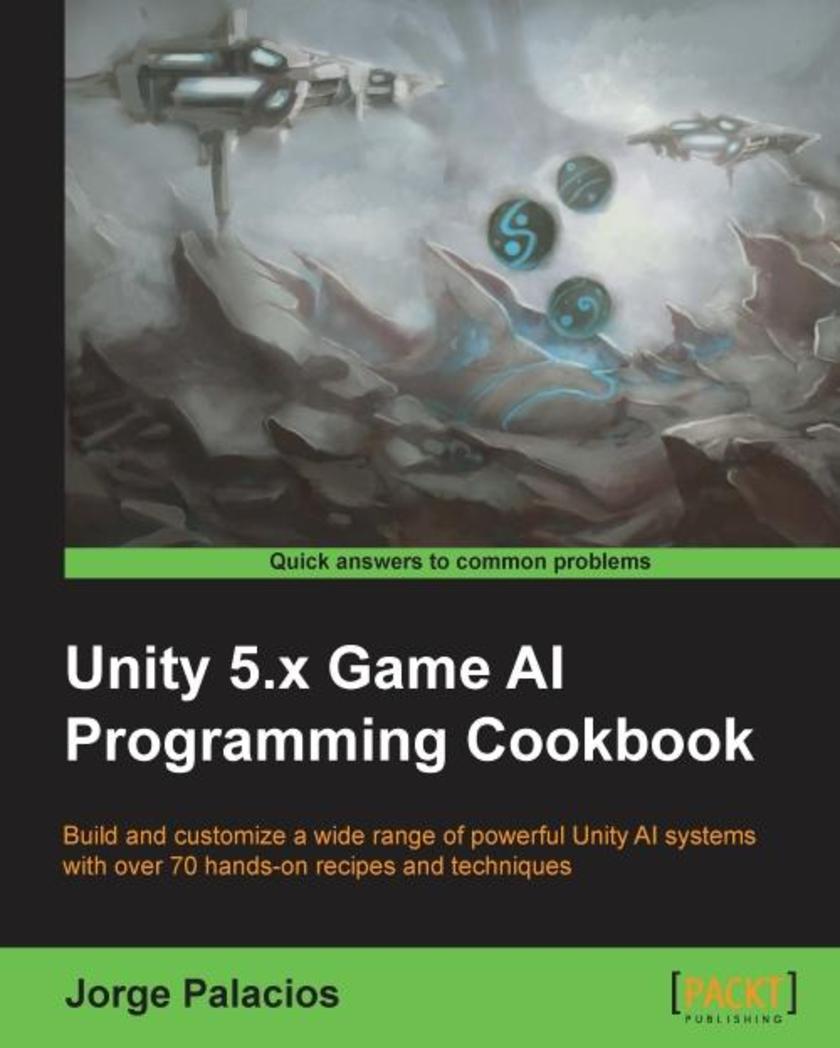
Unity 5.x Game AI Programming Cookbook
¥80.65
Build and customize a wide range of powerful Unity AI systems with over 70 hands-on recipes and techniques About This Book Empower your agent with decision making capabilities using advanced minimaxing and Negamaxing techniques Discover how AI can be applied to a wide range of games to make them more interactive. Instigate vision and hearing abilities in your agent through collider based and graph based systems Who This Book Is For This book is intended for those who already have a basic knowledge of Unity and are eager to get more tools under their belt to solve AI and gameplay-related problems. What You Will Learn Use techniques such as A*and A*mbush to empower your agents with path finding capabilities. Create a representation of the world and make agents navigate it Construct decision-making systems to make the agents take different actions Make different agents coordinate actions and create the illusion of technical behavior Simulate senses and apply them in an awareness system Design and implement AI in board games such as Tic-Tac-Toe and Checkers Implement efficient prediction mechanism in your agents with algorithms such as N-Gram predictor and na?ve Bayes classifier Understand and analyze how the influence maps work. In Detail Unity 5 comes fully packaged with a toolbox of powerful features to help game and app developers create and implement powerful game AI. Leveraging these tools via Unity’s API or built-in features allows limitless possibilities when it comes to creating your game’s worlds and characters. This practical Cookbook covers both essential and niche techniques to help you be able to do that and more. This Cookbook is engineered as your one-stop reference to take your game AI programming to the next level. Get to grips with the essential building blocks of working with an agent, programming movement and navigation in a game environment, and improving your agent's decision making and coordination mechanisms - all through hands-on examples using easily customizable techniques. Discover how to emulate vision and hearing capabilities for your agent, for natural and humanlike AI behaviour, and improve them with the help of graphs. Empower your AI with decision-making functions through programming simple board games such as Tic-Tac-Toe and Checkers, and orchestrate agent coordination to get your AIs working together as one. Style and approach This recipe-based guide will take you through implementing various AI algorithms. Each topic is explained and placed among other related techniques, sometimes building on the knowledge from previous chapters. There are also references to more technical books and papers, so you can dig deeper if you want to.
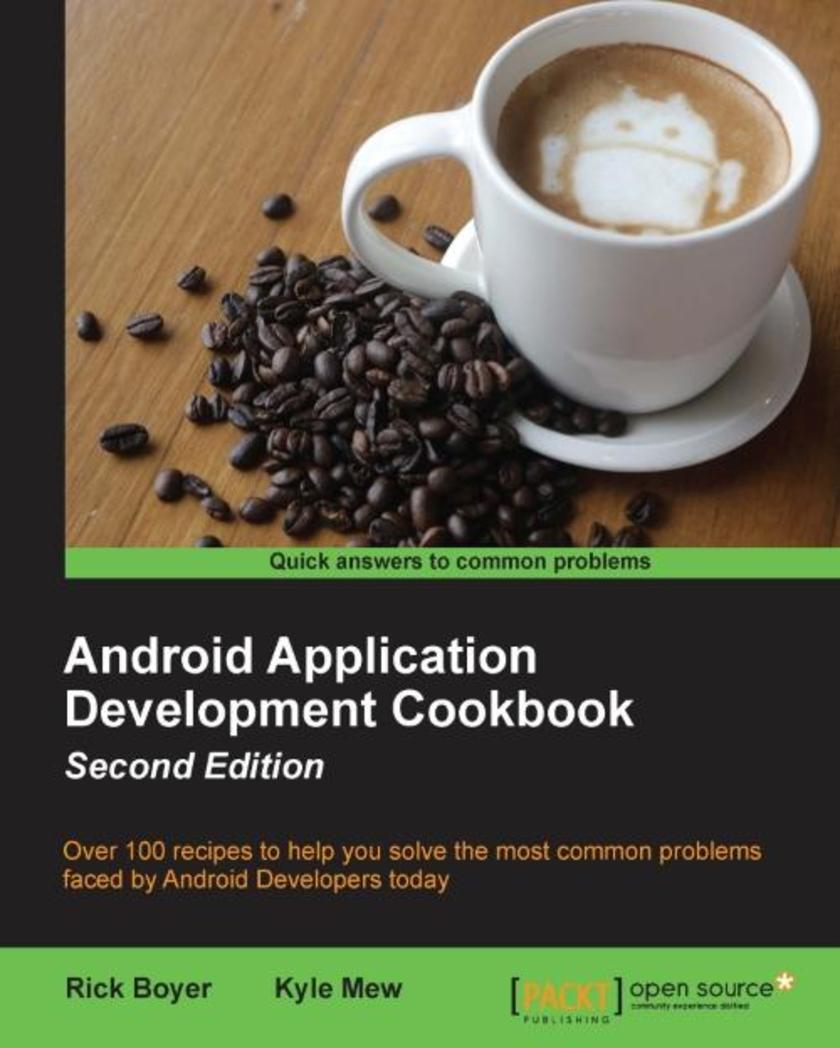
Android Application Development Cookbook - Second Edition
¥80.65
Over 100 recipes to help you solve the most common problems faced by Android Developers today About This Book Find the answers to your common Android programming problems, from set up to security, to help you deliver better applications, faster Uncover the latest features of Android Marshmallow to make your applications stand out Get up to speed with Android Studio 1.4 - the first Android Studio based on the IntelliJ IDE from JetBrains Who This Book Is For If you are new to Android development and want to take a hands-on approach to learning the framework, or if you are an experienced developer in need of clear working code to solve the many challenges in Android development, you can benefit from this book. Either way, this is a resource you’ll want to keep at your desk for a quick reference to solve new problems as you tackle more challenging projects. What You Will Learn Along with Marshmallow, get hands-on working with Google’s new Android Studio IDE Develop applications using the latest Android framework while maintaining backward-compatibility with the support library Master Android programming best practices from the recipes Create exciting and engaging applications using knowledge gained from recipes on graphics, animations, and multimedia Work through succinct steps on specifics that will help you complete your project faster Keep your app responsive (and prevent ANRs) with examples on the AsynchTask class Utilize Google Speech Recognition APIs for your app. Make use of Google Cloud Messaging (GCM) to create Push Notifications for your users Get a better understanding of the Android framework through detailed explanations In Detail The Android OS has the largest installation base of any operating system in the world; there has never been a better time to learn Android development to write your own applications, or to make your own contributions to the open source community! This “cookbook” will make it easy for you to jump to a topic of interest and get what you need to implement the feature in your own application. If you are new to Android and learn best by “doing,” then this book will provide many topics of interest. Starting with the basics of Android development, we move on to more advanced concepts, and we’ll guide you through common tasks developers struggle to solve. The first few chapters cover the basics including Activities, Layouts, Widgets, and the Menu. From there, we cover fragments and data storage (including SQLite), device sensors, the camera, and GPS. Then we move on more advanced topics such as graphics and animation (including OpenGL), multi-threading with AsyncTask, and Internet functionality with Volley. We’ll also demonstrate Google Maps and Google Cloud Messaging (also known as Push Notifications) using the Google API Library. Finally, we’ll take a look at several online services designed especially for Android development. Take your application big-time with full Internet web services without having to become a server admin by leveraging the power of Backend as a Service (BaaS) providers. Style and approach This book progresses from the fundamentals of Android Development to more advanced concepts, with recipes to solve the most common problems faced by developers. This cookbook makes it easy to jump to specific topics of interest, where you’ll find simple steps to implement the solution and get a clear explanation of how it works.

Real-Time Big Data Analytics
¥80.65
Design, process, and analyze large sets of complex data in real timeAbout This BookGet acquainted with transformations and database-level interactions, and ensure the reliability of messages processed using StormImplement strategies to solve the challenges of real-time data processingLoad datasets, build queries, and make recommendations using Spark SQLWho This Book Is ForIf you are a Big Data architect, developer, or a programmer who wants to develop applications/frameworks to implement real-time analytics using open source technologies, then this book is for you.What You Will LearnExplore big data technologies and frameworksWork through practical challenges and use cases of real-time analytics versus batch analyticsDevelop real-word use cases for processing and analyzing data in real-time using the programming paradigm of Apache StormHandle and process real-time transactional dataOptimize and tune Apache Storm for varied workloads and production deploymentsProcess and stream data with Amazon Kinesis and Elastic MapReducePerform interactive and exploratory data analytics using Spark SQLDevelop common enterprise architectures/applications for real-time and batch analyticsIn DetailEnterprise has been striving hard to deal with the challenges of data arriving in real time or near real time.Although there are technologies such as Storm and Spark (and many more) that solve the challenges of real-time data, using the appropriate technology/framework for the right business use case is the key to success. This book provides you with the skills required to quickly design, implement and deploy your real-time analytics using real-world examples of big data use cases.From the beginning of the book, we will cover the basics of varied real-time data processing frameworks and technologies. We will discuss and explain the differences between batch and real-time processing in detail, and will also explore the techniques and programming concepts using Apache Storm.Moving on, we’ll familiarize you with “Amazon Kinesis” for real-time data processing on cloud. We will further develop your understanding of real-time analytics through a comprehensive review of Apache Spark along with the high-level architecture and the building blocks of a Spark program.You will learn how to transform your data, get an output from transformations, and persist your results using Spark RDDs, using an interface called Spark SQL to work with Spark.At the end of this book, we will introduce Spark Streaming, the streaming library of Spark, and will walk you through the emerging Lambda Architecture (LA), which provides a hybrid platform for big data processing by combining real-time and precomputed batch data to provide a near real-time view of incoming data.Style and approachThis step-by-step is an easy-to-follow, detailed tutorial, filled with practical examples of basic and advanced features.Each topic is explained sequentially and supported by real-world examples and executable code snippets.
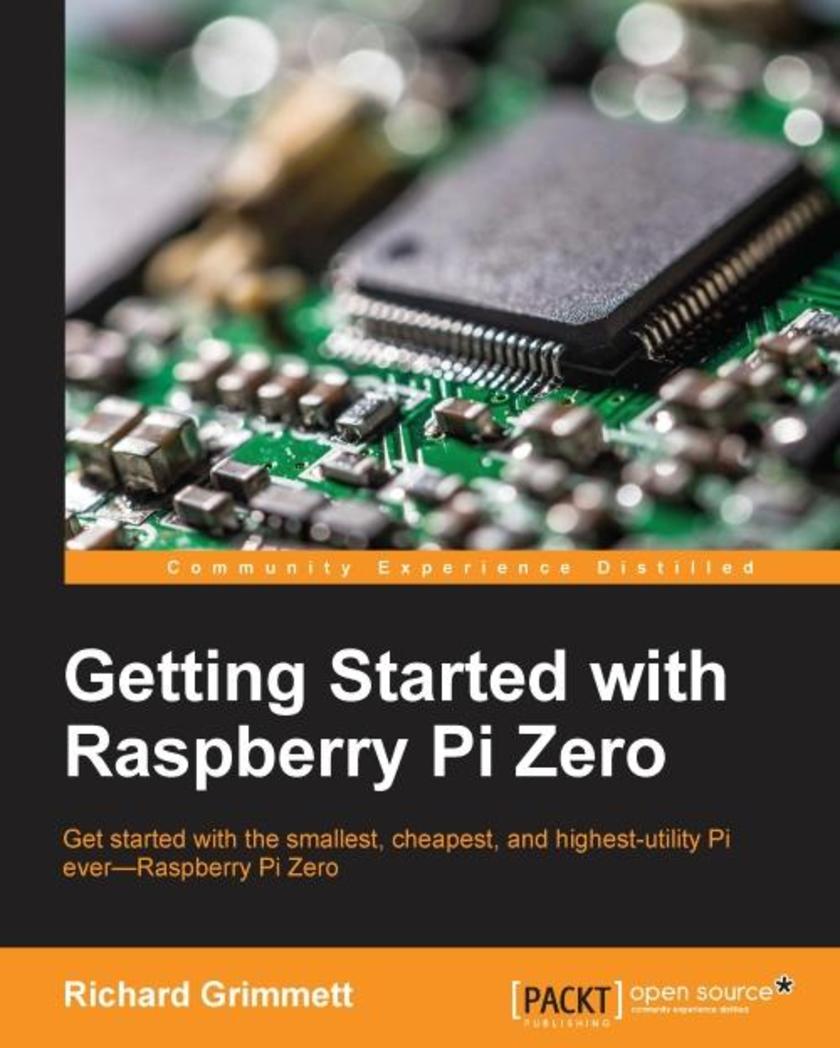
Getting Started with Raspberry Pi Zero
¥54.49
Get started with the smallest, cheapest, and highest-utility Pi ever—Raspberry Pi Zero About This Book Get started with Raspberry Pi Zero and put all of its exciting features to use Create fun games and programs with little or no programming experience Learn to use this super-tiny PC to control hardware and software for work, play, and everything else Who This Book Is For This book is for hobbyists and programmers who are taking their first steps toward using Raspberry Pi Zero. No programming experience is required, although some Python programming experience might be useful. What You Will Learn Understand how to initially download the operating system and set up Raspberry Pi Zero Find out how to control the GPIO pins of Raspberry Pi Zero to control LED circuits Get to grips with adding hardware to the GPIO to control more complex hardware such as motors Add USB control hardware to control a complex robot with 12 servos Include speech recognition so that projects can receive commands Enable the robot to communicate with the world around it by adding speech output Control the robot from a distance and see what the robot is seeing by adding wireless communication Discover how to build a Robotic hand and a Quadcopter In Detail Raspberry Pi Zero is half the size of Raspberry Pi A, only with twice the utility. At just three centimeters wide, it packs in every utility required for full-fledged computing tasks. This practical tutorial will help you quickly get up and running with Raspberry Pi Zero to control hardware and software and write simple programs and games. You will learn to build creative programs and exciting games with little or no programming experience. We cover all the features of Raspberry Pi Zero as you discover how to configure software and hardware, and control external devices. You will find out how to navigate your way in Raspbian, write simple Python *s, and create simple DIY programs. Style and approach This is a practical and fun ?getting startedtutorial that will guide you through everything new that the Raspberry Pi has to offer.
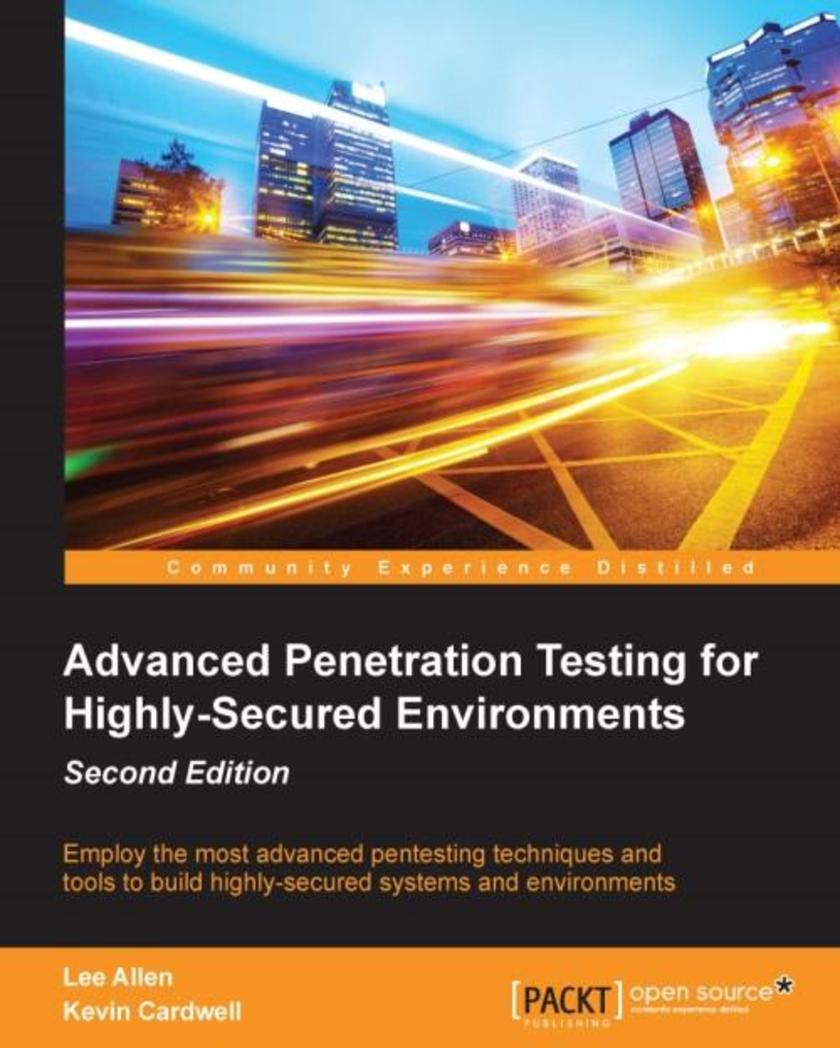
Advanced Penetration Testing for Highly-Secured Environments - Second Edition
¥107.90
Employ the most advanced pentesting techniques and tools to build highly-secured systems and environments About This Book Learn how to build your own pentesting lab environment to practice advanced techniques Customize your own *s, and learn methods to exploit 32-bit and 64-bit programs Explore a vast variety of stealth techniques to bypass a number of protections when penetration testing Who This Book Is For This book is for anyone who wants to improve their skills in penetration testing. As it follows a step-by-step approach, anyone from a novice to an experienced security tester can learn effective techniques to deal with highly secured environments. Whether you are brand new or a seasoned expert, this book will provide you with the skills you need to successfully create, customize, and plan an advanced penetration test. What You Will Learn A step-by-step methodology to identify and penetrate secured environments Get to know the process to test network services across enterprise architecture when defences are in place Grasp different web application testing methods and how to identify web application protections that are deployed Understand a variety of concepts to exploit software Gain proven post-exploitation techniques to exfiltrate data from the target Get to grips with various stealth techniques to remain undetected and defeat the latest defences Be the first to find out the latest methods to bypass firewalls Follow proven approaches to record and save the data from tests for analysis In Detail The defences continue to improve and become more and more common, but this book will provide you with a number or proven techniques to defeat the latest defences on the networks. The methods and techniques contained will provide you with a powerful arsenal of best practices to increase your penetration testing successes. The processes and methodology will provide you techniques that will enable you to be successful, and the step by step instructions of information gathering and intelligence will allow you to gather the required information on the targets you are testing. The exploitation and post-exploitation sections will supply you with the tools you would need to go as far as the scope of work will allow you. The challenges at the end of each chapter are designed to challenge you and provide real-world situations that will hone and perfect your penetration testing skills. You will start with a review of several well respected penetration testing methodologies, and following this you will learn a step-by-step methodology of professional security testing, including stealth, methods of evasion, and obfuscation to perform your tests and not be detected! The final challenge will allow you to create your own complex layered architecture with defences and protections in place, and provide the ultimate testing range for you to practice the methods shown throughout the book. The challenge is as close to an actual penetration test assignment as you can get! Style and approach The book follows the standard penetration testing stages from start to finish with step-by-step examples. The book thoroughly covers penetration test expectations, proper scoping and planning, as well as enumeration and foot printing
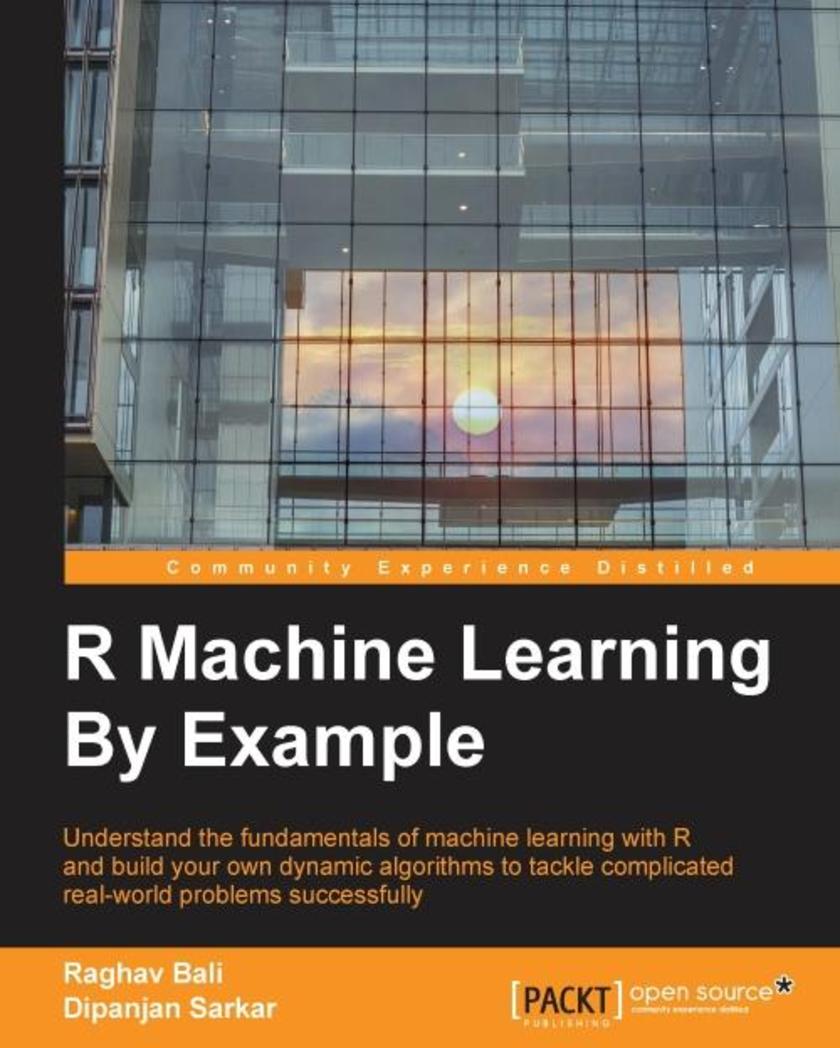
R Machine Learning By Example
¥90.46
Understand the fundamentals of machine learning with R and build your own dynamic algorithms to tackle complicated real-world problems successfully About This Book Get to grips with the concepts of machine learning through exciting real-world examples Visualize and solve complex problems by using power-packed R constructs and its robust packages for machine learning Learn to build your own machine learning system with this example-based practical guide Who This Book Is For If you are interested in mining useful information from data using state-of-the-art techniques to make data-driven decisions, this is a go-to guide for you. No prior experience with data science is required, although basic knowledge of R is highly desirable. Prior knowledge in machine learning would be helpful but is not necessary. What You Will Learn Utilize the power of R to handle data extraction, manipulation, and exploration techniques Use R to visualize data spread across multiple dimensions and extract useful features Explore the underlying mathematical and logical concepts that drive machine learning algorithms Dive deep into the world of analytics to predict situations correctly Implement R machine learning algorithms from scratch and be amazed to see the algorithms in action Write reusable code and build complete machine learning systems from the ground up Solve interesting real-world problems using machine learning and R as the journey unfolds Harness the power of robust and optimized R packages to work on projects that solve real-world problems in machine learning and data science In Detail Data science and machine learning are some of the top buzzwords in the technical world today. From retail stores to Fortune 500 companies, everyone is working hard to making machine learning give them data-driven insights to grow their business. With powerful data manipulation features, machine learning packages, and an active developer community, R empowers users to build sophisticated machine learning systems to solve real-world data problems. This book takes you on a data-driven journey that starts with the very basics of R and machine learning and gradually builds upon the concepts to work on projects that tackle real-world problems. You’ll begin by getting an understanding of the core concepts and definitions required to appreciate machine learning algorithms and concepts. Building upon the basics, you will then work on three different projects to apply the concepts of machine learning, following current trends and cover major algorithms as well as popular R packages in detail. These projects have been neatly divided into six different chapters covering the worlds of e-commerce, finance, and social-media, which are at the very core of this data-driven revolution. Each of the projects will help you to understand, explore, visualize, and derive insights depending upon the domain and algorithms. Through this book, you will learn to apply the concepts of machine learning to deal with data-related problems and solve them using the powerful yet simple language, R. Style and approach The book is an enticing journey that starts from the very basics to gradually pick up pace as the story unfolds. Each concept is first defined in the larger context of things succinctly, followed by a detailed explanation of their application. Each topic is explained with the help of a project that solves a real real-world problem involving hands-on work thus giving you a deep insight into the world of machine learning.
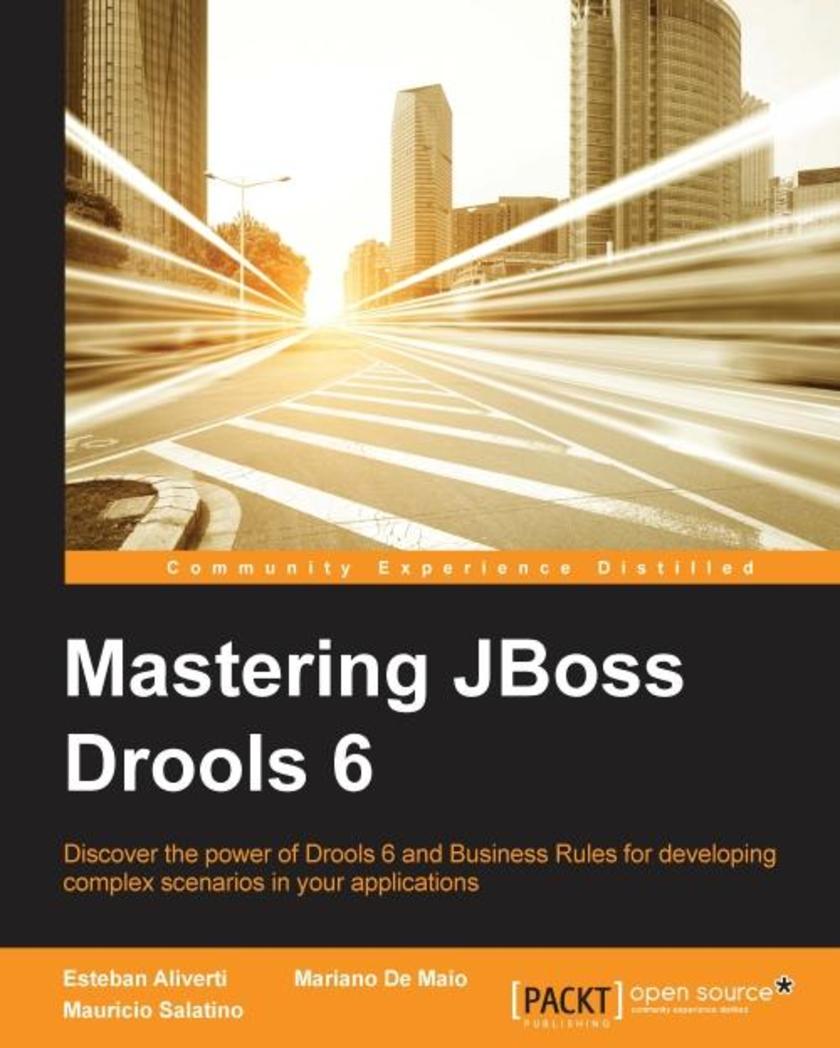
Mastering JBoss Drools 6
¥90.46
Discover the power of Drools 6 and Business Rules for developing complex scenarios in your applications About This Book Implement and model different rules using the DRL full syntax Model complex business decisions and domain models in order to automate and improve your operational decisions with the Drools framework A practical, fast-paced, hands-on guide to help you use the different components provided by the Drools Rule Engine Who This Book Is For This book is for Java developers and architects who need to have a deep understanding of how to create or integrate your applications with the Drools Rules Framework. The book assumes that you know the Java language well and also have experience with some widely used frameworks, such as Spring. You should also know the basics of Maven-based applications. What You Will Learn Automate your application’s decisions, such as promotion applying, discount policies, fraud detection, and more. Quickly get started with writing your first rules using the DRL full syntax. Discover the power of the new syntax components of the rule language. Define inferences in your business rules to simplify complex decisions. Write decision tables, templates,domain-specific languages, and scorecards, and learn how to map them to the Drools framework. Harness the full operational power of Drools through all of its configuration points. Use Drools configurations and architectures for different environments and scenarios. In Detail Mastering JBoss Drools 6 will provide you with the knowledge to develop applications involving complex scenarios. You will learn how to use KIE modules to create and execute Business Rules, and how the PHREAK algorithm internally works to drive the Rule Engine decisions. This book will also cover the relationship between Drools and jBPM, which allows you to enrich your applications by using Business Processes. You will be briefly introduced to the concept of complex event processing (Drools CEP) where you will learn how to aggregate and correlate your data based on temporal conditions. You will also learn how to define rules using domain-specific languages, such as spreadsheets, database entries, PMML, and more. Towards the end, this book will take you through the integration of Drools with the Spring and Camel frameworks for more complex applications. Style and approach Approached from a developer’s perspective, the book teaches you all the advanced concepts of Business Rules applicable examples with helpful screenshots, diagrams, tutorials, and examples.
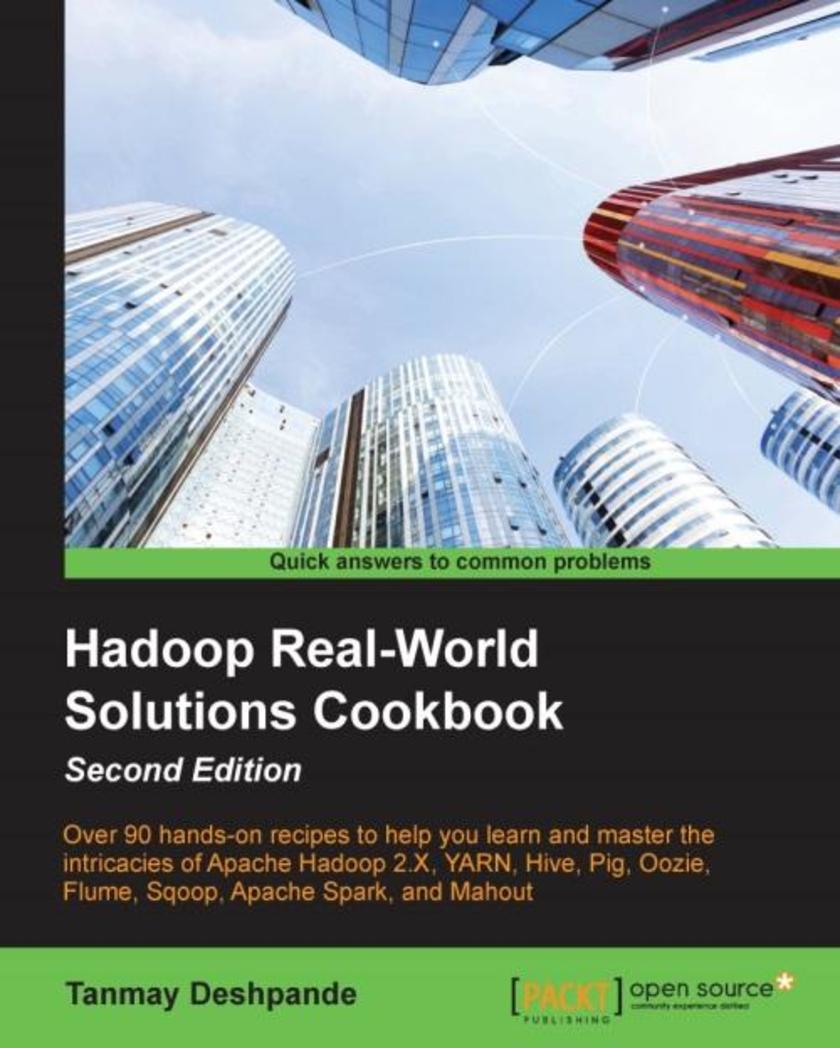
Hadoop Real-World Solutions Cookbook - Second Edition
¥99.18
Over 90 hands-on recipes to help you learn and master the intricacies of Apache Hadoop 2.X, YARN, Hive, Pig, Oozie, Flume, Sqoop, Apache Spark, and Mahout About This Book Implement outstanding Machine Learning use cases on your own analytics models and processes. Solutions to common problems when working with the Hadoop ecosystem. Step-by-step implementation of end-to-end big data use cases. Who This Book Is For Readers who have a basic knowledge of big data systems and want to advance their knowledge with hands-on recipes. What You Will Learn Installing and maintaining Hadoop 2.X cluster and its ecosystem. Write advanced Map Reduce programs and understand design patterns. Advanced Data Analysis using the Hive, Pig, and Map Reduce programs. Import and export data from various sources using Sqoop and Flume. Data storage in various file formats such as Text, Sequential, Parquet, ORC, and RC Files. Machine learning principles with libraries such as Mahout Batch and Stream data processing using Apache Spark In Detail Big data is the current requirement. Most organizations produce huge amount of data every day. With the arrival of Hadoop-like tools, it has become easier for everyone to solve big data problems with great efficiency and at minimal cost. Grasping Machine Learning techniques will help you greatly in building predictive models and using this data to make the right decisions for your organization. Hadoop Real World Solutions Cookbook gives readers insights into learning and mastering big data via recipes. The book not only clarifies most big data tools in the market but also provides best practices for using them. The book provides recipes that are based on the latest versions of Apache Hadoop 2.X, YARN, Hive, Pig, Sqoop, Flume, Apache Spark, Mahout and many more such ecosystem tools. This real-world-solution cookbook is packed with handy recipes you can apply to your own everyday issues. Each chapter provides in-depth recipes that can be referenced easily. This book provides detailed practices on the latest technologies such as YARN and Apache Spark. Readers will be able to consider themselves as big data experts on completion of this book. This guide is an invaluable tutorial if you are planning to implement a big data warehouse for your business. Style and approach An easy-to-follow guide that walks you through world of big data. Each tool in the Hadoop ecosystem is explained in detail and the recipes are placed in such a manner that readers can implement them sequentially. Plenty of reference links are provided for advanced reading.
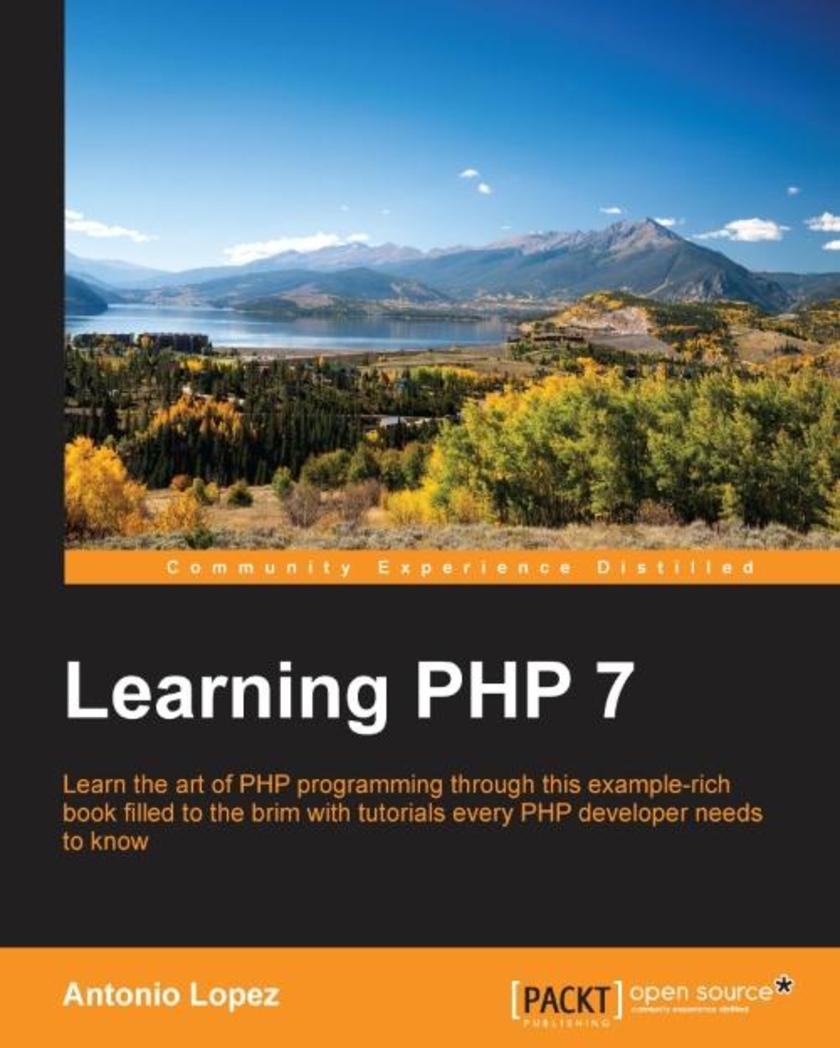
Learning PHP 7
¥90.46
Learn the art of PHP programming through this example-rich book filled to the brim with tutorials every PHP developer needs to know About This Book Set up the PHP environment and get started with web programming Leverage the potential of PHP for server-side programming, memory management, and object-oriented programming (OOP) This book is packed with real-life examples to help you implement the concepts as you learn Who This Book Is For If you are a web developer or programmer who wants to create real-life web applications using PHP 7, or a beginner who wants to get started with PHP 7 programming, this book is for you. Prior knowledge of PHP, PHP 7, or programming is not mandatory. What You Will Learn Set up a server on your machine with PHP Use PHP syntax with the built-in server to create apps Apply the OOP paradigm to PHP to write richer code Use MySQL to manage data in your web applications Create a web application from scratch using MVC Add tests to your web application and write testable code Use an existing PHP framework to build and manage your applications Build REST APIs for your PHP applications Test the behavior of web applications with Behat In Detail PHP is a great language for building web applications. It is essentially a server-side *ing language that is also used for general purpose programming. PHP 7 is the latest version with a host of new features, and it provides major backwards-compatibility breaks. This book begins with the fundamentals of PHP programming by covering the basic concepts such as variables, functions, class, and objects. You will set up PHP server on your machine and learn to read and write procedural PHP code. After getting an understanding of OOP as a paradigm, you will execute MySQL queries on your database. Moving on, you will find out how to use MVC to create applications from scratch and add tests. Then, you will build REST APIs and perform behavioral tests on your applications. By the end of the book, you will have the skills required to read and write files, debug, test, and work with MySQL. Style and approach This book begins with the basics that all PHP developers use every day and then dives deep into detailed concepts and tricks to help you speed through development. You will be able to learn the concepts by performing practical tasks and implementing them in your daily activities, all at your own pace.
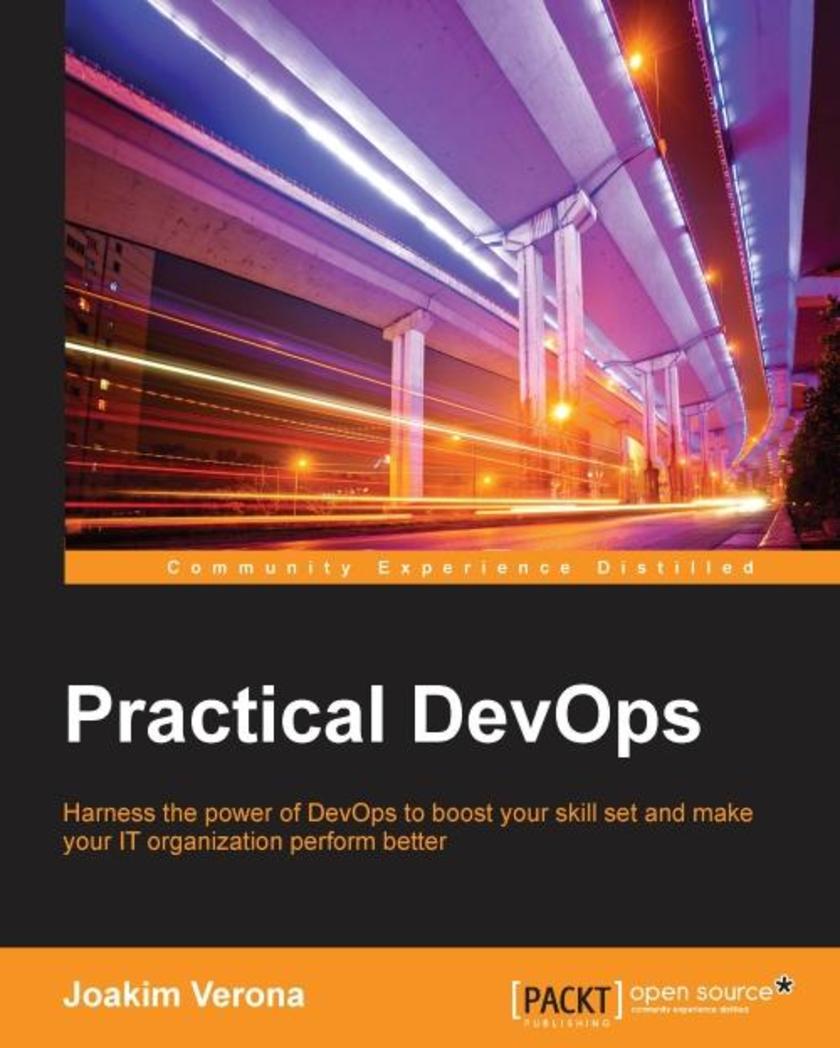
Practical DevOps
¥80.65
Harness the power of DevOps to boost your skill set and make your IT organization perform betterAbout This BookGet to know the background of DevOps so you understand the collaboration between different aspects of an IT organization and a software developerImprove your organization's performance to ensure smooth production of software and servicesDeploy top-quality software and ensure software maintenance and release management with this practical guideWho This Book Is ForThis book is aimed at developers and system administrators who wish to take on larger responsibilities and understand how the infrastructure that builds today's enterprises works. This book is also great for operations personnel who would like to better support developers. You do not need to have any previous knowledge of DevOps.What You Will LearnAppreciate the merits of DevOps and continuous delivery and see how DevOps supports the agile processUnderstand how all the systems fit together to form a larger wholeSet up and familiarize yourself with all the tools you need to be efficient with DevOpsDesign an application that is suitable for continuous deployment systems with Devops in mindStore and manage your code effectively using different options such as Git, Gerrit, and GitlabConfigure a job to build a sample CRUD applicationTest the code using automated regression testing with Jenkins SeleniumDeploy your code using tools such as Puppet, Ansible, Palletops, Chef, and VagrantMonitor the health of your code with Nagios, Munin, and GraphiteExplore the workings of Trac—a tool used for issue trackingIn DetailDevOps is a practical field that focuses on delivering business value as efficiently as possible. DevOps encompasses all the flows from code through testing environments to production environments. It stresses the cooperation between different roles, and how they can work together more closely, as the roots of the word imply—Development and Operations.After a quick refresher to DevOps and continuous delivery, we quickly move on to looking at how DevOps affects architecture. You'll create a sample enterprise Java application that you’ll continue to work with through the remaining chapters. Following this, we explore various code storage and build server options. You will then learn how to perform code testing with a few tools and deploy your test successfully. Next, you will learn how to monitor code for any anomalies and make sure it’s running properly. Finally, you will discover how to handle logs and keep track of the issues that affect processesStyle and approachThis book is primarily a technical guide to DevOps with practical examples suitable for people who like to learn by implementing concrete working code. It starts out with background information and gradually delves deeper into technical subjects.
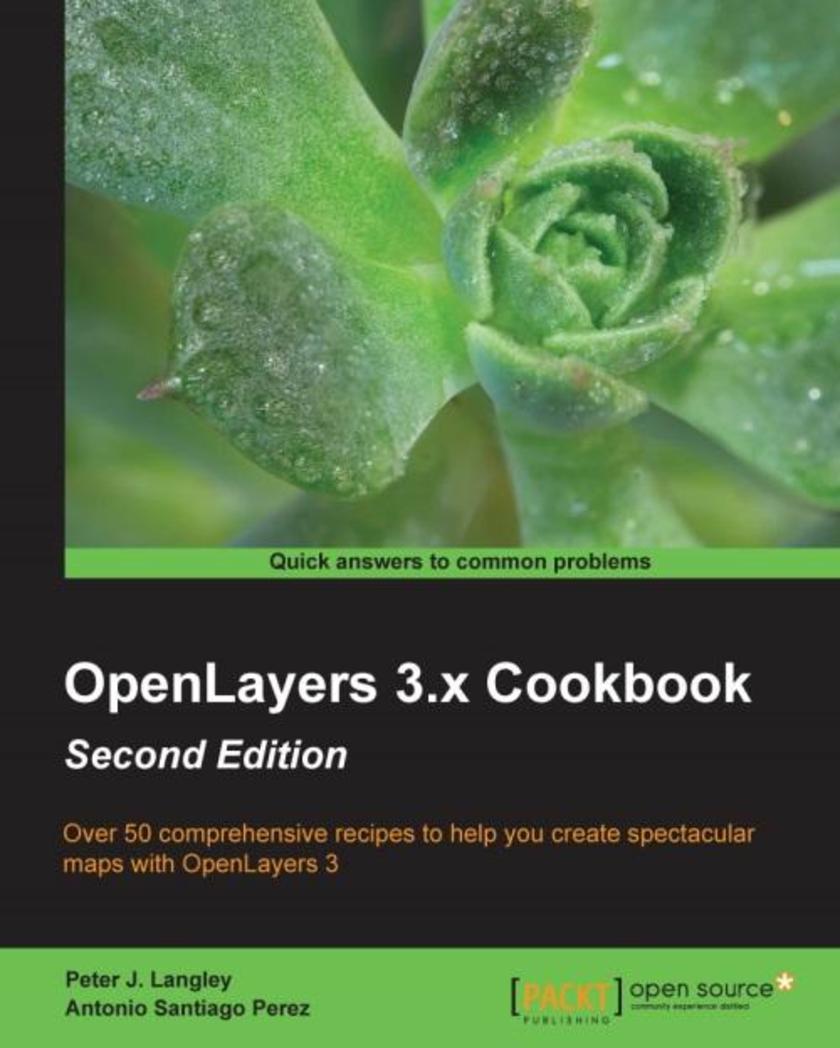
OpenLayers 3.x Cookbook - Second Edition
¥80.65
Over 50 comprehensive recipes to help you create spectacular maps with OpenLayers 3 About This Book Create highly customized mapping apps for the web with rich interactivity and diverse content using JavaScript See how successful mapping apps work and how they integrate with third-party services Packed full of code examples, screenshots, and explanations from professionals in the industry Who This Book Is For If you are a GIS-related professional with basic knowledge of web technologies and want to gain in-depth knowledge of creating web mapping applications, then this book is for you. The recipes will be appropriately mixed to suit JavaScript beginners or experts and cover basic to advanced topics on OpenLayers. What You Will Learn Create stunning maps, and understand projection. Add customized raster and vector layers Work with important tile providers Work with OGCs, WMS, and WFS compliant servers Read/write features from/to different data sources Style features to improve their visualization Understand events and work with the main controls Enhance maps with HTML5 technologies such as Geolocation In Detail Data visualization and analytics has become an important task across all technology-based industries. OpenLayers 3,is one of the most important and complete open source JavaScript mapping libraries today. Throughout this book, you will go through recipes that expose various features of OpenLayers 3, allowing you to gain an insight into building complex GIS web applications. You’ll get to grips with the basics of creating a map with common functionality and quickly advance to more complicated solutions that address modern challenges. You will explore into maps, raster and vector layers and styling in-depth. This book also includes problem solving and how-to recipes for the most common and important tasks. The range of recipes includes: creating basic maps, working with raster and vector layers, understanding events,working with the main controls, reading features from different data sources, styling features, and understanding the underlying architecture. It will also cover solutions and optimizations to challenges commonly faced in modern applications. Style and approach This book teaches you how to create stunning maps that are highly interactive and visually appealing with the help of 50 handpicked recipes. Each recipe will address your need to visualize data on a map. Just follow the steps in the recipes to create maps of your choice in no time.
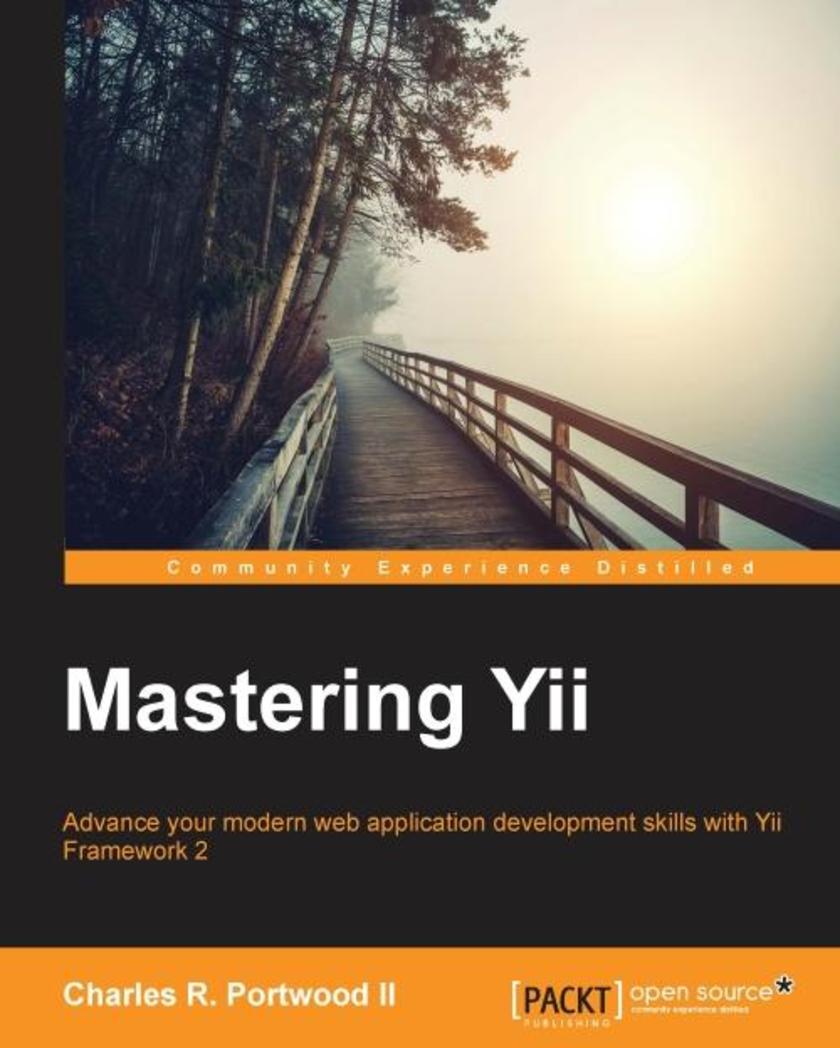
Mastering Yii
¥90.46
Advance your modern web application development skills with Yii Framework 2About This BookLearn to work with the key aspects of Yii Framework 2Explore how to create RESTful APIs with YiiIncorporate codeception with Yii2 to test your code thoroughlyWho This Book Is ForThis book is for Yii Framework developers who want to quickly master Yii2. This book assumes some familiarity with Yii2, PHP 5, and HTML5.What You Will LearnExplore Yii2’s conventions and learn how to properly configure Yii2Create both web and console applicationsReduce development time by learning to create classes automatically with Gii, Yii2’s automatic code generation toolUse Yii2’s database migration toolManage and access databases with Active Record, DAO, and Query BuilderHandle user authentication and authorization within Yii2Create RESTful APIs with Yii Framework 2Test applications automatically with codeceptionIn DetailThe successor of Yii Framework 1.1, Yii2 is a complete rewrite of Yii Framework, one of the most popular PHP 5 frameworks for making modern web applications. The update embraces the best practices and protocols established with newer versions of PHP, while still maintaining the simple, fast, and extendable behavior found in its predecessor.This book has been written to enhance your skills and knowledge with Yii Framework 2. Starting with configuration and how to initialize new projects, you’ll learn how to configure, manage, and use every aspect of Yii2 from Gii, DAO, Query Builder, Active Record, and migrations, to asset manager. You'll also discover how to automatically test your code using codeception.With this book by your side, you’ll have all the skills you need to quickly create rich modern web and console applications with Yii2.Style and approach This book is a step-by-step guide to mastering every aspect of Yii Framework 2. Each chapter outlines a new set of tools along with code that can be used to efficiently create modern web and console applications




 购物车
购物车 个人中心
个人中心



